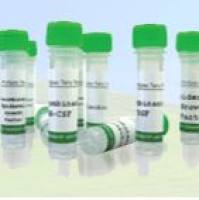Noxious Heat Threshold Measured with Slowly Increasing Temperatures: Novel Rat Thermal Hyperalgesia Models
互联网
互联网
相关产品推荐

Recombinant Human Signaling Threshold Regulating Transmembrane Adaptor 1
¥1080

Acid-fast stain kit (Ziehl-Neelsen thermal dyeing)(S0230)-3×50ml
¥200

BDNF重组蛋白|Recombinant Human / Mouse / Rat / Cynomolgus / Canine BDNF Protein
¥580

Recombinant-Human-Tetraspanin-4TSPAN4Tetraspanin-4; Tspan-4 Alternative name(s): Novel antigen 2; NAG-2 Transmembrane 4 superfamily member 7
¥10892

Recombinant-Thiomicrospira-crunogena-Protease-HtpXhtpXProtease HtpX EC= 3.4.24.- Alternative name(s): Heat shock protein HtpX
¥11424
相关问答

